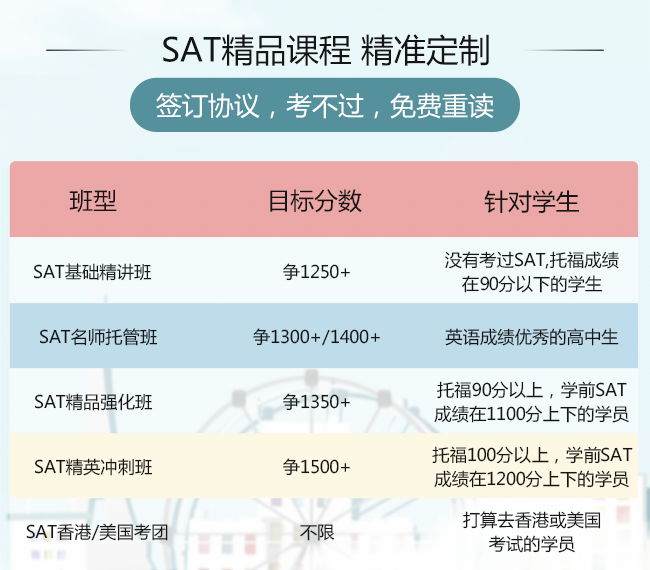2018年10月6日北美SAT阅读真题回忆第三篇:Pleasant to the Touch
2018年10月6日北美SAT阅读真题回忆第三篇:Pleasant to the Touch
讲过去的观点是人类的slow-conducting nerves只能感觉两种stimuli--pain and temperature, 而对于pressure和vibration的刺激只能通过fast fibers来感知。Olausson科学家通过做实验想要确定对于gentle pressure感应的slow fibers是否也在人类中存在,进一步研究slow fibers的特征。文章后半部分提出了一个问题--为什么人类会有这样的fibers;为了确定CT fibers是否可以convey pleasant sensation, Olausson科学家利用GL病人对于pressure感应的独特特征证实了结论--CT fibers convey a more emotional quality of touch(provide pleasurable sensations)
原文如下: Science 1
In the early 1990s, textbooks acknowledged that humans had slow-conducting nerves, but asserted that those nerves only responded to two types of stimuli: pain and temperature. Sensations of pressure and vibration were believed to travel only alongmyelinated, fast-signaling nerve fibers, which also give information about location. Experiments blocking nerve fibers supported this notion. Preventing fast fibers from firing (either by clamping the relevant nerve or by injectingthe local anesthetic lidocaine) seemed to eliminate the sensation of pressure altogether, but blocking slow fibers only seemed to reduce sensitivity to warmth or a small painful shock.
In contrast to the work in humans, experiments in cats, rats,rabbits, and even monkeys found that unmyelinated, slow-conducting nerve fiberswere indeed sensitive to light touch, but were found only in hairy skin. Some researchers speculated that humans had lost such fibers to evolution as theyshed most of their body hair. While a few isolated studies suggested that facial skin retained the fibers, those studies were often dismissed as merely demonstrating the existence of a vestigial type of nerve fiber, says Olausson.
Olausson and Gothenburg University colleagues Åke Vallbo and Johan Wessberg wondered if slow fibers responsive togentle pressure might be active in humans as well as in other mammals. In 1993,they corralled 28 young volunteers and recorded nerve signals while gentlybrushing the subjects’ arms with their fingertips. Using a technique calledmicroneurography, in which a fine filament is inserted into a single nerve tocapture its electrical impulses, the scientists were able to measure how quickly—or slowly—the nerves fired. They showed that soft stroking prompted two different signals, one immediate and one delayed. The delay, Olausson explains,means that the signal from a gentle touch on the forearm will reach the brainabout a half second later. This delay identified nerve impulses traveling at speeds characteristic of slow, unmyelinated fibers—about 1 m/s—confirming the presence of these fibersin human hairy skin. (In contrast, fast-conducting fibers, already known torespond to touch, signal at a rate between 35 and 75 m/s.)
Then, in 1999, the group looked more closely at the characteristics of the slow fibers. They named these“low-threshold” nerves “C-tactile,” or CT, fibers, said Olausson, because of their “exquisite sensitivity” to slow, gentle tactile stimulation, but unresponsiveness to noxious stimuli like pinpricks.
But why exactly humans might have such fibers, which respond only to a narrow range of rather subtle stimuli, wasinitially mystifying. Unlike other types of sensory nerves, CT fibers could befound only in hairy human skin—such as the forearm and thigh. No amount of gentle stroking of hairless skin, such as the palms and soles of the feet,prompted similar activity signatures. Olausson and his colleagues decided thatthese fibers must be conveying a different dimension of sensory information than fast-conducting fibers.
Although microneurography can giveinformation about how a single nerve responds to gentle brushing and pressure,it cannot tease out what aspect of sensation that fiber relays, says Olausson.He wanted to know if that same slow nerve can distinguish where thebrush touches the arm, and whether it can discern the difference between agoat-hair brush and a feather. Most importantly, could that same fiber convey a pleasant sensation?
To address the question,Olausson’s group sought out a patient known as G.L. who had an unusual nerve defect. More than 2 decades earlier, she had developed numbness across manyparts of her body after taking penicillin to treat a cough and fever. Testingshowed that she had lost responsiveness to pressure, and a nerve biopsyconfirmed that G.L.’s quick-conducting fibers were gone, resulting in aninability to sense any pokes, prods, or pinpricks below her nose. But she couldstill sense warmth, suggesting that her slow-conducting unmyelinated fiberswere intact.
Upon recruiting G.L., Olaussontested her by brushing her arm gently at the speed of between 2–10 cm/s. She had more trouble distinguishingthe direction or pressure of the brush strokes than most subjects, but reportedfeeling a pleasant sensation. When the researchers tried brushing her palm,where CT fibers are not found, she felt nothing.
G.L. also afforded scientists the op-portunity to observe which areas of the brain respond to the gentlebrushing. Sensations of touch stimulate two different brain areas, says VaughanMacefield, a neuroscientist at the University of Western Sydney whoresearches how the brain processes pain. The somatosensory cortex registers thequick signals sent along myelinated nerve fibers and tells us where on our bodythe sensations originate. Slow, unmyelinated fibers send signals to the insularcortex—a section of the brain that processes taste and pain, as well asemotion. Most of our touch perception mingles information from both areas, saysMacefield.
Olausson used functional MRIstudies to examine which areas of the brain lit up when G.L.’s arm was gentlybrushed to activate CT fibers. In normal subjects, both the somatosensory and insular cortices were activated, but only the insular cortex was active when researchers brushed G.L.’s arm. This solidified the notion that CT fibers convey a more emotional quality of touch, rather than the conscious aspect thathelps us describe what we are sensing. CT fibers, it seemed, specifically provide pleasurable sensations.
前两篇真题回忆:
新航道上海sat培训 开设有各种SAT培训班 ,小班教学,团队一对一指导,助教全程跟踪辅导,直达高分不在是梦。










